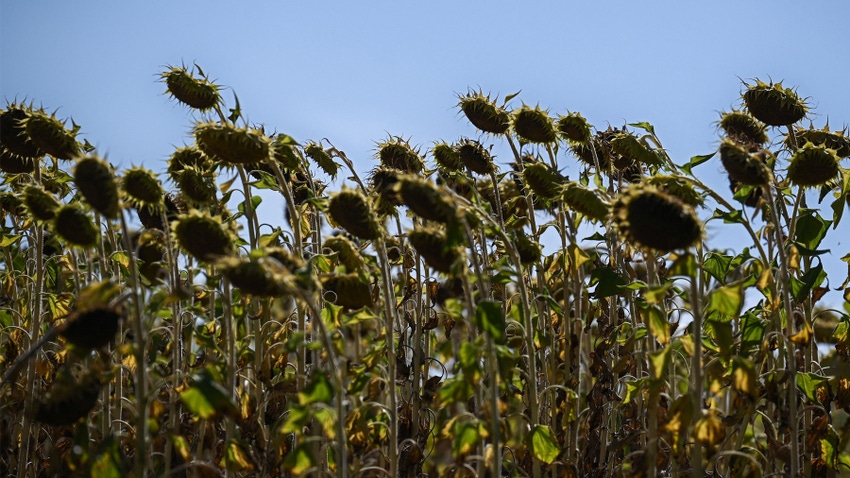
Area planted to sunflowers in 2023 decreased 22% from 2022 and totals 1.32 million acres, according to the USDA Farm Service Agency crop acreage report. The planted area of oil-type varieties, at 1.16 million acres, is down 25% from 2022. Planted acreage of non-oil varieties, estimated at 153,400 acres, is up 7% from last year. 2023 U.S. sunflower production is still undetermined and will not be known until later this year.
Most of the crop had been rated good to excellent throughout the growing season. This should mean that yields will be above trend, assuming normal weather through the rest of fall. Initial estimates of total oil and non-oil sunflower production are in a range of 2.2 billion to 2.4 billion pounds, which is about 18% lower than last year’s crop. USDA will release its final acreage and production estimates in January.
How’s harvest?
Harvest of the U.S. sunflower crop started in mid-September. At this writing, initial yield reports are positive, and quality is generally very good. Depending on the size of the 2023 crop, seed prices could drift lower, as harvest deliveries arrive at plants and farmers pick up the selling pace in the next couple of months. After the initial harvest delivery period, prices will follow demand news.
Global sunflower production in 2023-24 is projected at 55.85 million metric tons. This figure is up about 3.4 MMT from last year. The increase is mainly due to a larger crop in Ukraine, Russia and the European Union. Production in Argentina, China and Turkey is expected to be lower than last year.
Global crush is projected to increase based on the higher production figure. The sunflower oil trade is forecast to remain steady at last year’s level, with ending oil stocks increasing 8% from 2022-23 levels. Ending seed stocks are expected to stay relatively low, representing only 7% of annual usage.
With harvest in progress in the Northern Hemisphere, the market is beginning to look at 2024 production prospects in the Southern Hemisphere. Farmers in both Brazil and Argentina are talking about a major increase in 2024 soybean acres. If realized, this could put pressure on U.S. new-crop oilseed prices this fall into winter.
U.S. producers are also looking at crop options for 2024, and crush plants are expected to be out early offering new-crop NuSun and high-oleic contracts that have cash or Act of God production clauses. To regain the acreage lost this year, new-crop sunflower prices are expected to be competitive in relation to other crops.
Something else to keep in mind is oil premiums that are paid on sunflowers. Oil premiums are offered at crush plants on oil content above 40%. A 2% price premium is paid for each 1% of oil above 40%. For example, 45% oil content results in a 10% price premium, which pushes gross returns from oil sunflowers even higher.
Read more about:
SunflowersAbout the Author(s)
You May Also Like






